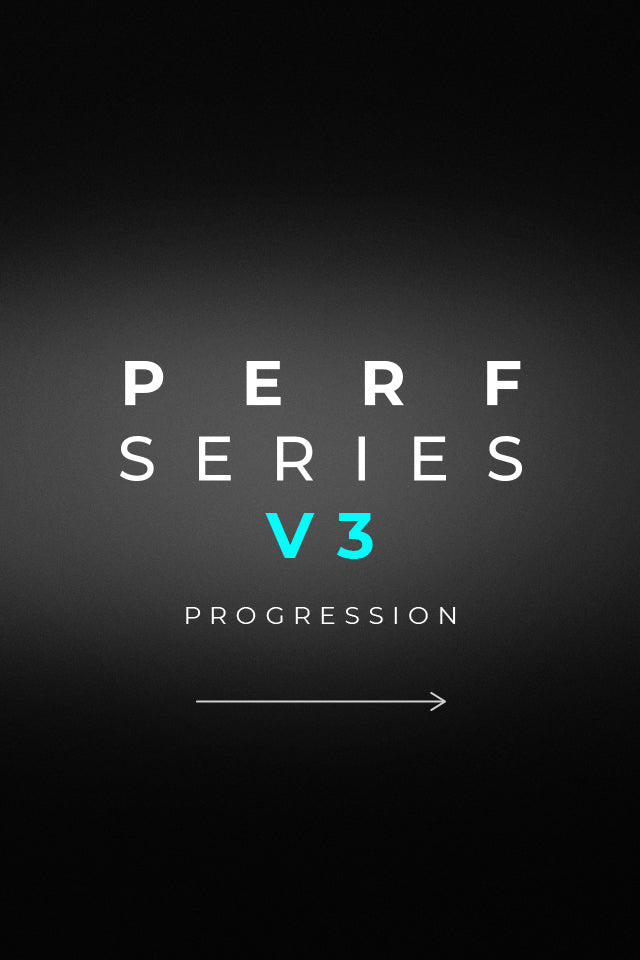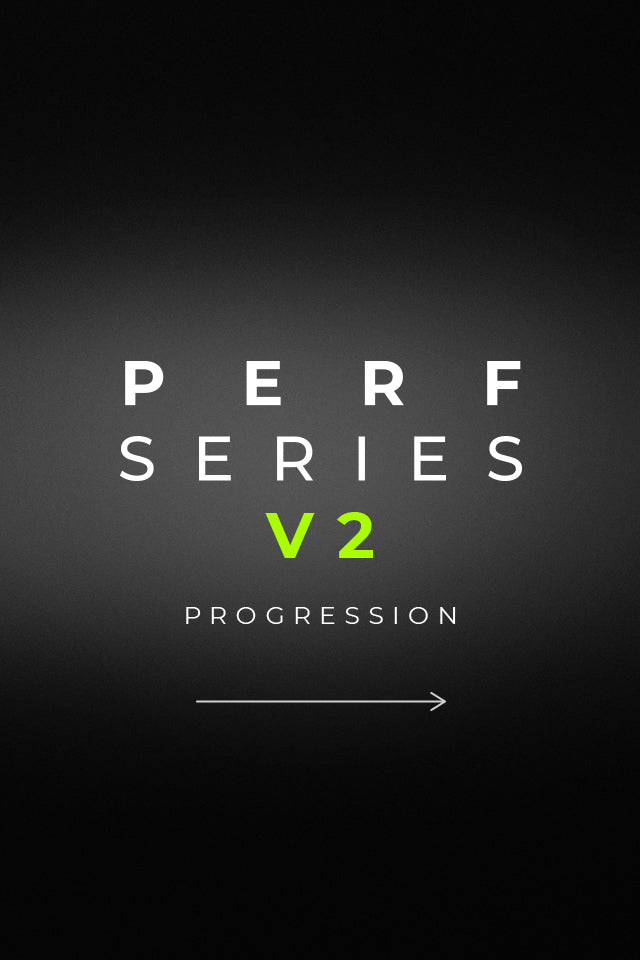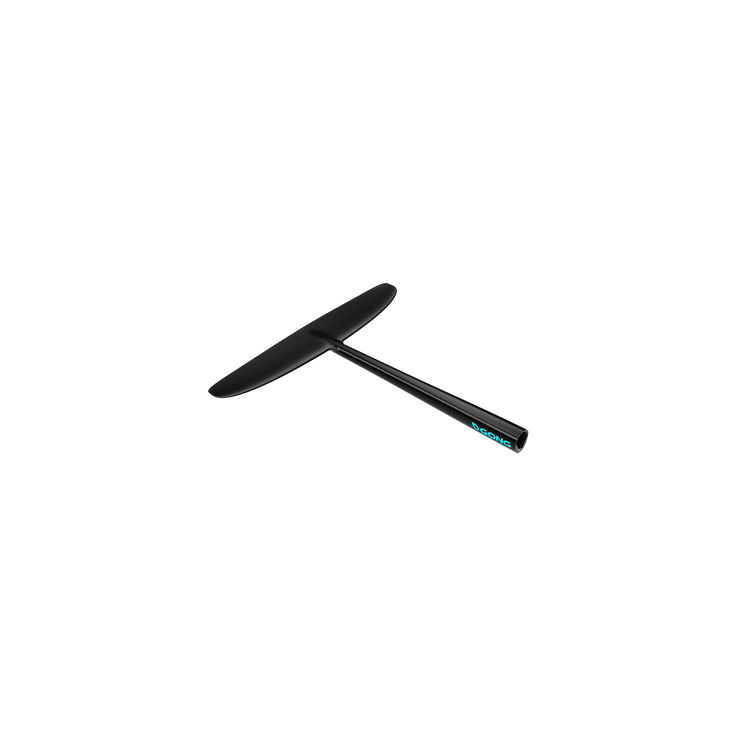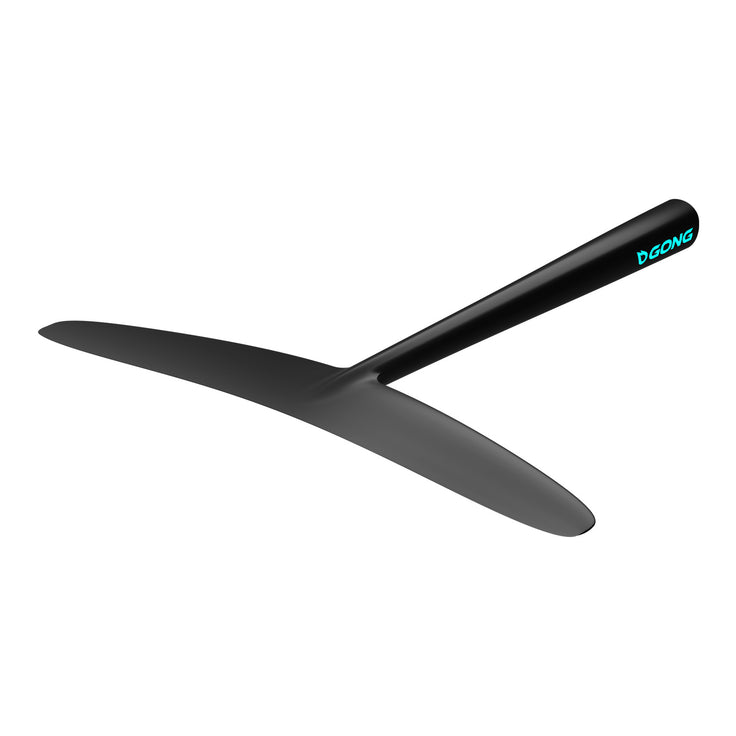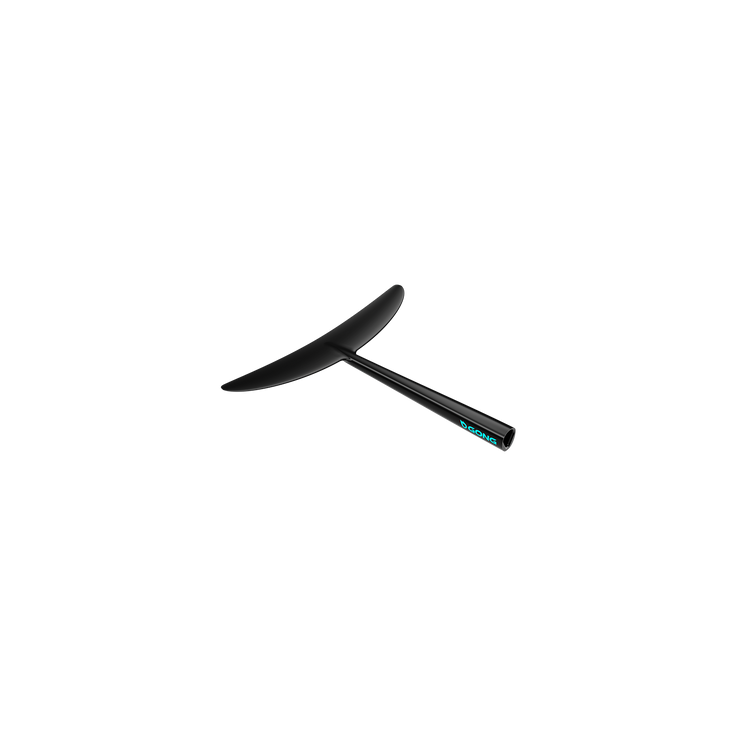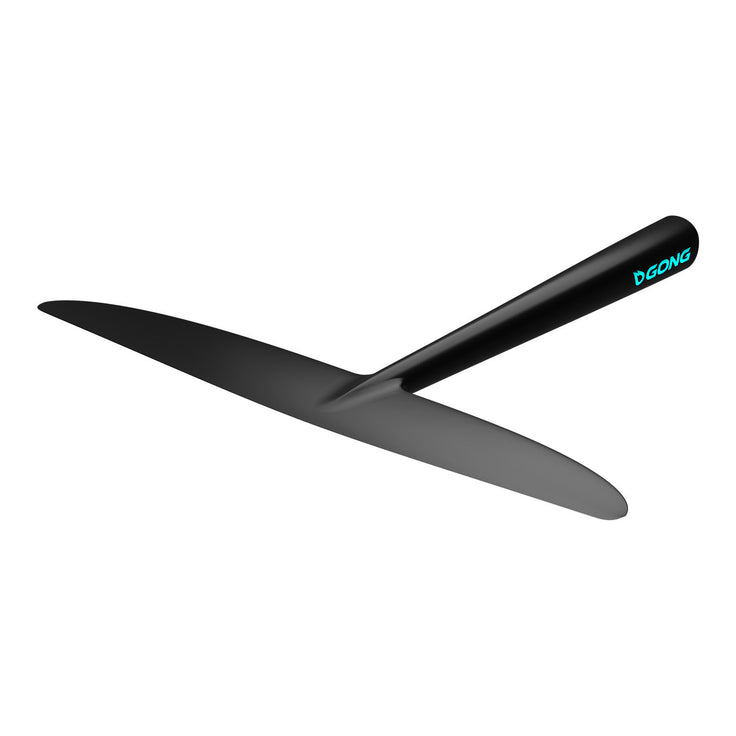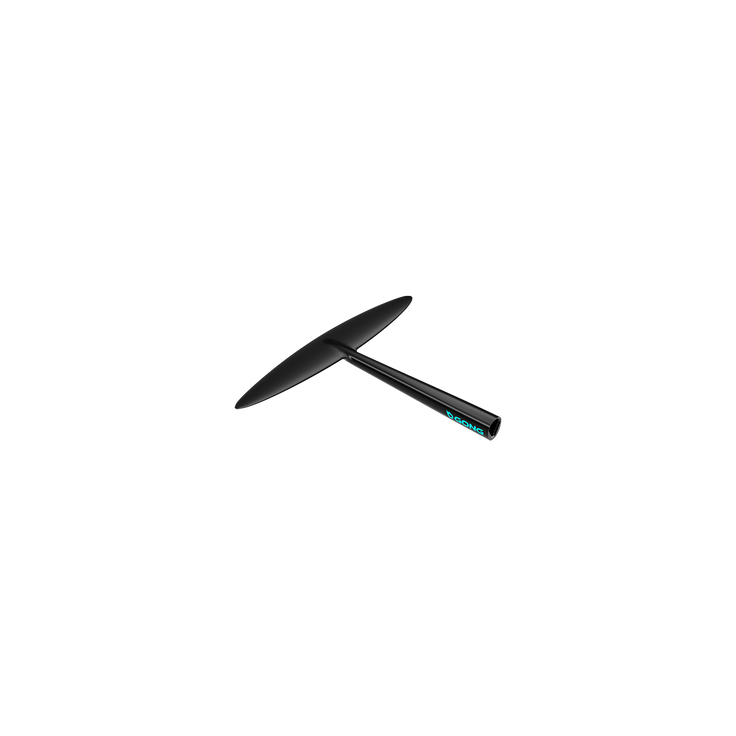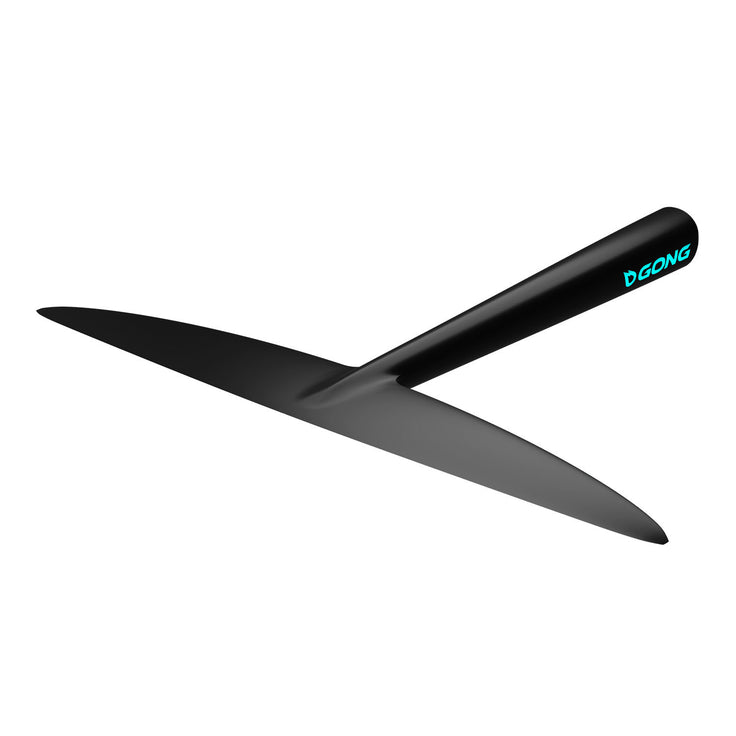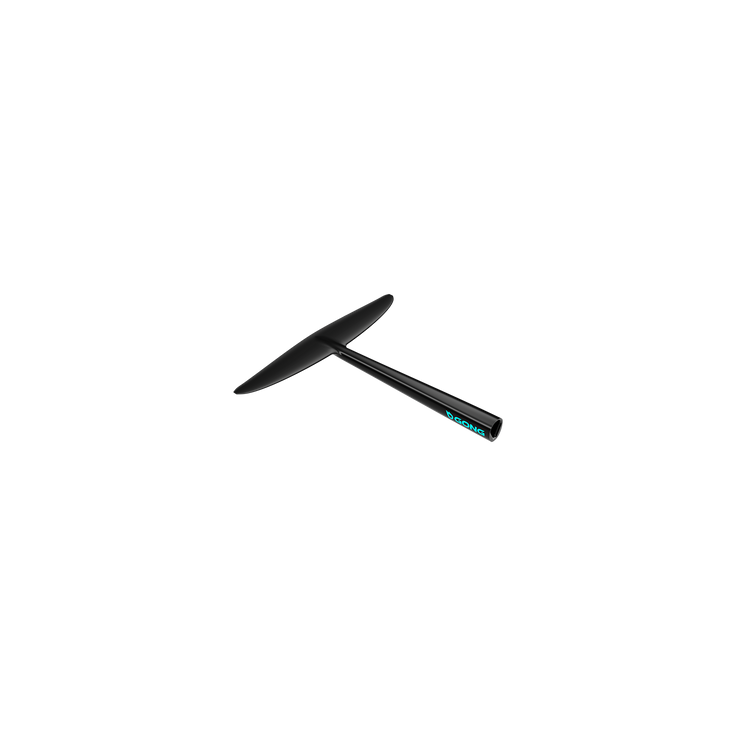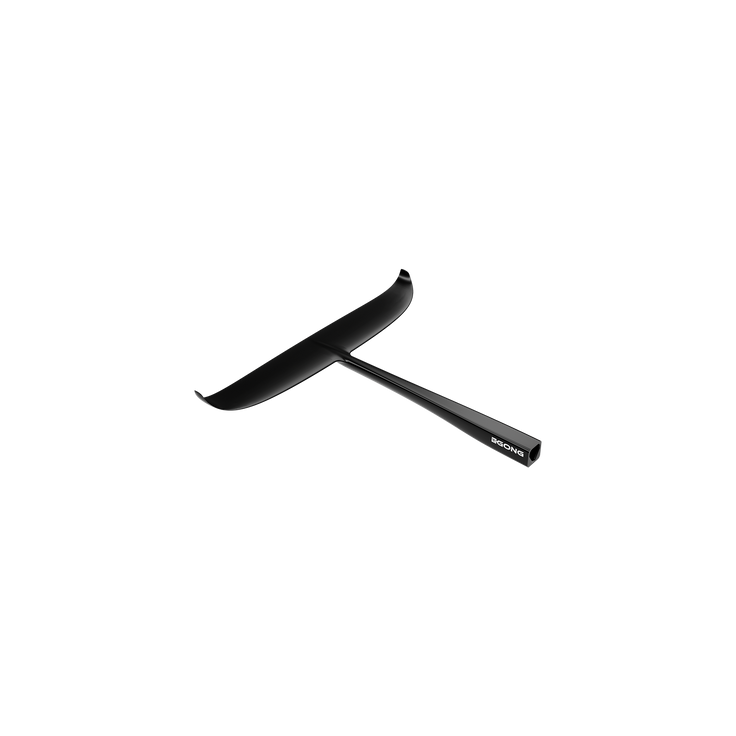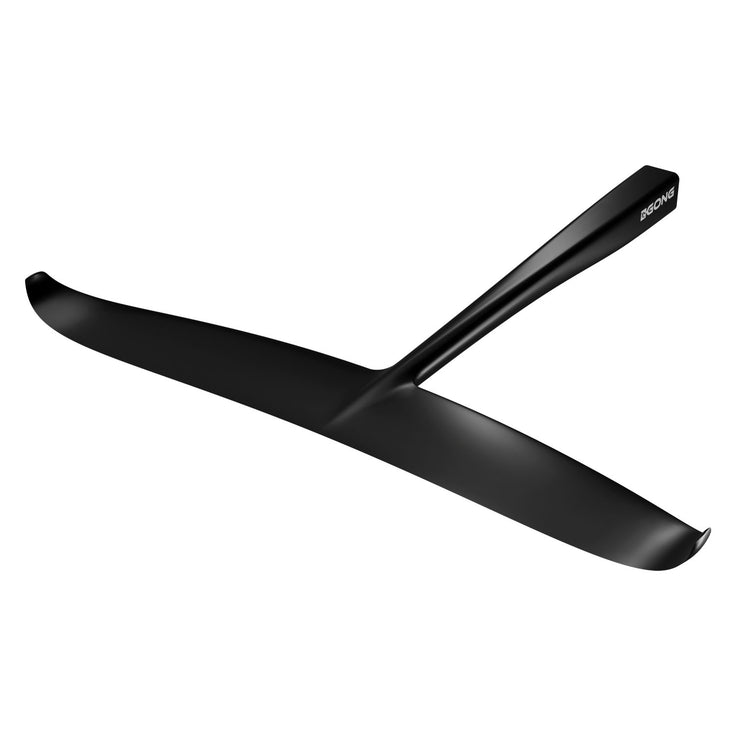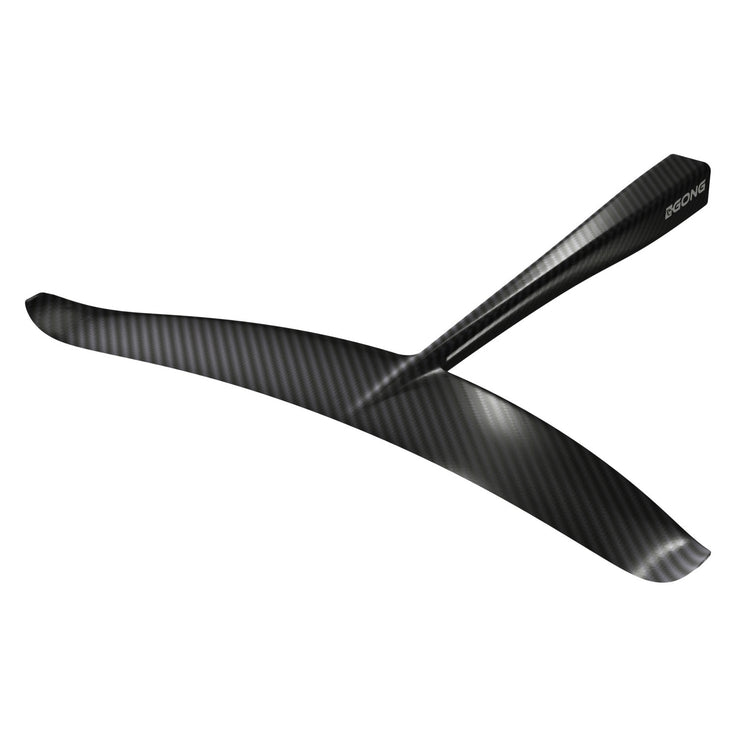Choosing the ideal stabilizer follows the same principles as for the front wing, but with some nuances. Although its role is often perceived as secondary, the stabilizer strongly influences stability, turning control, and the overall balance of the foil. The following characteristics help in choosing a stabilizer based on the glide program.
Surface of the Stabilizer
The surface of the stabilizer influences the stability, maneuverability, and control of the foil. The larger the surface, the more stable and forgiving the foil will be, while a smaller surface improves responsiveness and maneuverability.
- Large surface: Ideal for light wind and for riders looking for precise control. It enhances stability and helps maintain lift at low speeds.
- Small surface: Suitable for experienced riders who want more maneuverability and responsiveness for quick maneuvers, such as in freestyle and waveriding.
Aspect Ratio
The stabilizer's ratio (the ratio between span and surface area) influences its behavior in terms of stability and maneuverability. A higher ratio improves glide and high-speed handling but reduces tolerance and lift, while a moderate ratio ensures a good compromise for various practices.
Ratios are generally limited by flex. A high ratio (greater than 10) limits thickness, making manufacturing rigidly impossible and paradoxically reducing performance. This is a technical limit to hydrodynamic performance.
- Low ratio (less than 6): Stable and forgiving, perfect for beginners or riders in progression.
- Moderate ratio (6 to 9): A good balance between stability and responsiveness, ideal for freeride and surf.
- High ratio (9 and above): Designed for glide, racing, downwind, and light wind, maximizing glide and speed.
Types of Stabilizer Outlines
Rectangular Outline
- Characteristics: Even distribution of surface area.
- Advantages: Ensures great stability and predictable control in a straight line. Ideal for beginners or those seeking a stable foil.
- Disadvantages: Limits maneuverability and responsiveness, making the foil less agile in sharp turns.
Tapered Outline
- Characteristics: Wider surface in the center and tapering toward the tips.
- Advantages: Increases maneuverability and facilitates rail-to-rail transitions. Reduces drag, improving glide.
- Disadvantages: Less stable, with on/off maneuverability requiring more technical control.
Elliptical Outline
- Characteristics: Rounded surface in the center, tapering smoothly towards the tips.
- Advantages: Ensures smooth and progressive maneuverability in turns. Reduces drag with tapered tips, enhancing glide.
- Disadvantages: Less stable in a straight line, requiring more advanced technique but remains very easy to control.
Crescent Outline
- Characteristics: Curvature toward the rear distributes lift over a larger span.
- Advantages: Greatly improves stability and smoothness in turns, reducing up-and-down movement. Ideal for progressive turn control.
- Disadvantages: Less responsive than other shapes, limiting quick direction changes.
Football Outline
- Characteristics: Wide surface at the tips, narrowed center.
- Advantages: Provides excellent lateral stability.
- Disadvantages: Less maneuverable and prone to cavitation in tight turns. Very soft.
Stabilizer Camber: Dihedral
The camber seen from the front (or dihedral) of the stabilizer plays a key role in its lift, stability, and control. Stabilizers can have positive, negative, or neutral camber, altering their behavior depending on the conditions.
- Flat Dihedral: Provides predictable control and consistent lift. Good glide and maneuverability in turns.
- Lowered Dihedral (negative): Enhances stability and grip in turns by channeling more water and keeping the tips in the water, reducing the risk of ventilation. Ideal for choppy conditions.
- Raised Dihedral (positive): Increases maneuverability by releasing water under load for quick direction changes. Ideal for experienced riders seeking a reactive foil.
Stabilizer Tips
The tips of the stabilizer can be flat, lowered, raised, with or without winglets, altering the foil's maneuverability and behavior.
Flat Tips
- Advantages: Stable and consistent lift, predictable. Better glide and endless maneuverability.
- Disadvantages: Less tolerance during inclines, slight risk of loss of control in tight turns.
Lowered Tips (Negative Dihedral at the Tips)
- Advantages: Excellent grip in turns, reducing the risk of ventilation.
- Disadvantages: More drag, reducing glide at high speeds. More fragile due to being closer to the bottom.
Raised Tips (Positive Dihedral at the Tips)
- Advantages: Increased maneuverability for direction changes and rail-to-rail movement. Very stable and easy to anticipate.
- Disadvantages: Less stability in a straight line, increasing the technical demands of piloting. A bit more dangerous but sturdier due to being farther from the bottom.
Vertical Raised Tips (Winglets near 90°)
- Advantages: Keeps the foil on a rail, very easy at high speeds. Reduces drag, ideal for racing. Reduces the risk of mast ventilation because these tips perfectly align the foil in the flow.
- Disadvantages: Less maneuverable, increasing the risk of injury. Often thin and fragile.
Stabilizer Profiles
The profile of the stabilizer, just like that of the front wing, determines lift, stability, and glide of the foil. However, being an inverted profile, it counters the pitch torque of the front wing, playing a crucial role in overall balance and control. The key factor is whether the foil needs to be self-stable (for beginners), totally unstable (for freestyle), moderately stable (for surfing), or stable yet reactive (for racing).
Here are the main types of profiles and their characteristics:
Thick Profile
- Advantages: Generates good stability and control in a straight line, offering a consistent and predictable attitude. Ideal for beginners or light wind conditions where stability is crucial.
- Disadvantages: More drag, limiting glide and top speed, making it less suitable for reactive/accelerating disciplines like freestyle or downwind.
Thin Profile
- Advantages: Promotes glide and speed, with less drag, which allows better control at high speed and faster transitions. Suitable for racing and waveriding, where responsiveness is key.
- Disadvantages: Less forgiving and more sensitive to disturbances, making the foil harder to stabilize for less experienced riders.
Voluminous Extrado (bottom part of the profile)
- Advantages: Provides strong lift control, ensuring reassuring stability, ideal for pumping and light wind.
- Disadvantages: Limits speed and glide due to higher drag, making it less suitable for fast disciplines.
Voluminous Intrado (top part of the profile)
- Advantages: Reduces drag and improves glide, allowing better gliding and higher speeds.
- Disadvantages: Reduces control, lift, and stability, requiring good technical skills from riders, especially in choppy conditions.
Round Leading Edge
- Advantages: Great tolerance in transitions and stability at all angles, making it very suitable for beginners, freeride, surfing, and freestyle.
- Disadvantages: Lower top speed.
Pinched Leading Edge
- Advantages: Increases speed and responsiveness, ideal for racing and high-speed conditions.
- Disadvantages: Less forgiving, with reduced stability, making this profile more demanding.
Hollowed-out Rear Extrado
- Advantages: Improves speed by reducing drag at the rear, optimizing glide and smoothness at high speeds.
- Disadvantages: Less lift and can lead to unpredictable behavior at low speeds.
Hollowed-out Rear Intrado
- Advantages: Provides more lift, ensuring better stability and easier control.
- Disadvantages: Limits glide and speed, with a more challenging behavior in rapid transitions.
Type of Fuselage
The shape and size of the fuselage affect stability and responsiveness. Longer fuselages offer better stability but make the foil a bit less maneuverable. Shorter fuselages favor a more radical and agile feel.
- Long fuselage: Offers maximum stability and simple control, ideal for beginners, light wind, freeride, and glide sessions.
- Short fuselage: For a more playful and dynamic behavior, ideal for freestyle and radical surfing. Also useful for speed, allowing quick adjustments under heavy loads.
